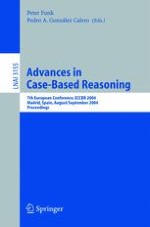2004 | Book
Advances in Case-Based Reasoning
7th European Conference, ECCBR 2004, Madrid, Spain, August 30 - September 2, 2004. Proceedings
Editors: Peter Funk, Pedro A. González Calero
Publisher: Springer Berlin Heidelberg
Book Series : Lecture Notes in Computer Science
Included in: Professional Book Archive
